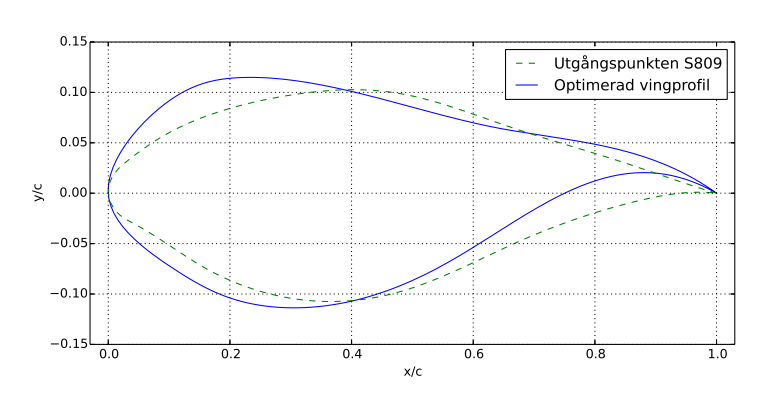Aerodynamic Optimization of a Wind Turbine Using a Genetic Algorithm, Blade Element Momentum Theory and Xfoil
What if wind turbines could reproduce (yes, feel free to picture it you perv)? Maybe then evolution would create a superbreed of wind turbines outperforming the ones we have today.

Figure 1: A part of the initial seed of randomized airfoils

Figure 2: The final airfoil that showed 15 % better results
That was the general idea of my bachelor’s thesis, and I actually got some promising results. To investigate this, I developed an implementation of the blade element momentum theory in Python - integrating it with the open source software Xfoil. This enabled for an genetic algorithm to be used in producing a new wind turbine rotor blade with efficiency gains up to 15 % for an arbitrary wind site.
The code is on GitHub and so is the thesis. Unfortionally only in Swedish, but here’s the English abstract:
This study presents a methodology that enables the annual average power of a wind turbine to be increased by automatically optimizing it’s airfoil, twist and chord distribution. As a part of the study the software SiteOpt has been developed. This software connects the open source software XFOIL with the blade element momentum theory. XFOIL gives lift and drag coefficients which enable the blade element momentum theory to predict the power of a wind turbine at different wind and rotational speeds. An optimization algorithm of the type genetic algorithms is used to develop a new rotor blade. An academic benchmark case (Unsteady Aerodynamics Experiment Phase III) was selected as a starting point of the optimization because wind tunnel data was available for that campain. With the geometry developed by the genetic algoritm a theoretical increase of 15 % more power could be extracted. However, it has been shown that the model has shortcomings at high wind speeds where the predicted power does not match wind tunnel data. This is thought to be related to that the model assumes a completely rigid blade. In real world applications a rotorblade will bend on higher wind speeds (about 8 m/s). It is therefore concluded that the model in its current form is flawed and that future work should aim to take these effects into account. However, a wind histogram for a specific location was used in order to calculate the annual average power for the wind turbine. The wind histogram used in this study to obtain the results has it’s wind speeds 81 % before 10 m/s where the model is acceptable. Therefore the results are largely to be considered accurate.